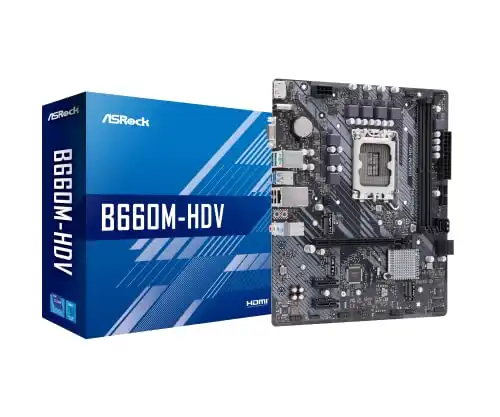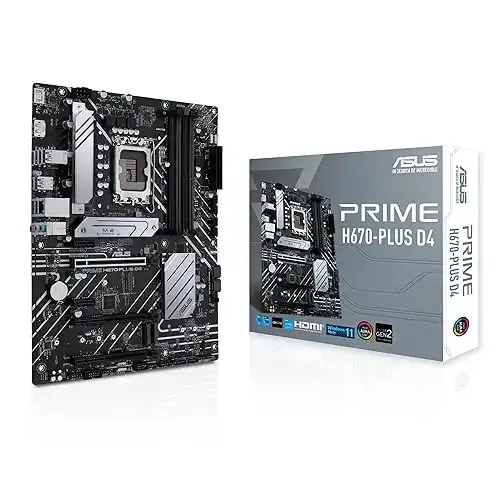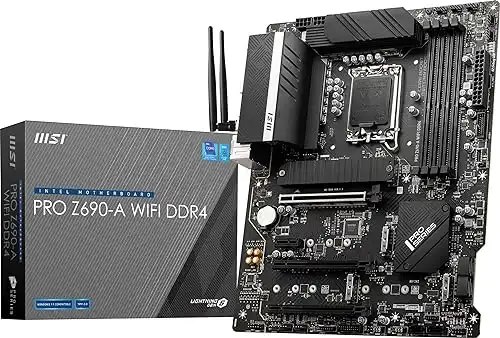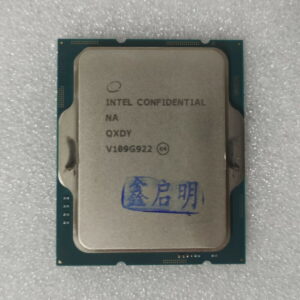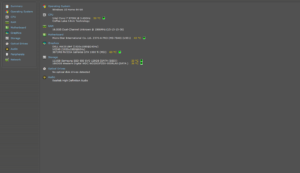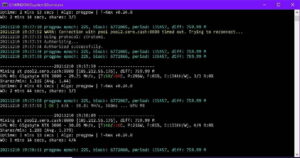With every new generation of processors we receive a new generation of motherboards to go along. With the release of Intel’s Alder Lake desktop CPU lineup and the new LGA 1700 socket type, we received the 600-series of Intel motherboards.
These motherboards are available in one of four types, or chipsets: H610, B660, H670, and Z690. In this article we’ll look at each of these in depth, compare features, look at advantages and disadvantages of each, and consider what the best-suited processors are for each one.
What is Chipset?
First, it’s essential to understand what chipset means. In the most literal sense of the word, the chipset (also called the Southbridge) is a component that is built into the motherboard. It’s directly connected to many components in the motherboard, and the CPU communicates with components through the chipset.
See Also: Intel 500-Series Chipset Comparison
Chipset defines certain functionalities in a motherboard, but so does the manufacturers’ design. For instance, look at the specs below pulled from Intel’s H610 Chipset Specifications Page:

The H610 chipset supports a maximum of PCIe 3.0. However, if we look at the specs for the Asus Prime H610M-E D4, we find that it includes a PCIe 4.0 slot.

This slot communicates directly with the CPU, while the Chipset controls the x1 slot. In other words, if a manufacturer wanted to create an H610 motherboard with PCIe 5.0, they certainly could. You most likely won’t ever see this though, since H610 is targeted towards consumers who want an affordable build. If someone wanted the latest technologies they’d buy a top-of-the-line Z690.
As you can see, chipset doesn’t define every aspect of a motherboard, as third-party input has a role in this. Still, there are certain trends that tend to remain true across most models of a chipset, and this is what we’ll be looking at.
Keep in mind that some features (such as memory overclocking) are strictly determined by chipset. For instance, in no case will you be able to overclock your RAM past the maximum XMP limit on an H610 board. We’ll cover this side of things as well. After reading this article, we hope you have a more complete idea of what each chipset entails, and which one is best for your specific needs.
H610
First off, we have the H610 chipset. This is the least expensive line of motherboards, and consequently the least feature-rich. H610 boards come almost exclusively in the downsized Micro-ATX form-factor, with ASRock’s H610M-ITX/ac and Asus’ Prime H610I-PLUS D4 being some of the only boards of a different dimension.
At the moment the vast majority of H610 makes are designed to work with DDR4 RAM, although a couple of DDR5 models will be released. There are no four-DIMM H610 models; all feature a dual-channel two slot design and support a maximum of 64GB of memory.
As previously mentioned, while H610 motherboards support XMP up to 3200MHz (which is the maximum official supported DDR4 frequency for even the Core i9-12900K), they don’t allow further memory overclocking, nor do they support CPU overclocking.
In terms of design H610 boards tend not to have any form of heatsinks except for over the chipset. This is a good thing, since any VRM or M.2 heatsinks would simply add to the price and wouldn’t add any real benefit aside from minor aesthetic improvements.
As far as connectivity goes, these motherboards offer nothing more than needed. They feature only one PCIe x16 slot which usually supports the fourth revision of the technology, and occasionally a x1 slot is sprinkled in.
Most H610s have at least one M.2 slot, while several have two and three is rare and a few models have none at all. Typically these are limited to PCIe gen 3, so if you want transfer speeds above 3500 MB/s you’ll need at least a B660. We don’t recommend upgrading solely for faster NVMe speeds, as tangible performance benefits will be minimal at best.
Four rear USB ports is standard for this chipset; you won’t find a model with less.
Best CPUs for H610 Motherboards
The H610 chipset is best-suited for “budget” 60 or 65W processors like the Core i3-12100 and i5-12400. These models aren’t meant to be overclocked and won’t demand too much of an H610’s less-robust VRMs, so a lower-end motherboard won’t limit their potential.
B660
B660 boards are some of the most popular, as they’re usually very affordable and offer a lot wider range of features than H610.
While DDR4 models are far more common in the B660 chipset, there are upwards of 10 DDR5-compatible makes, giving you a lot more options should you want faster but more expensive RAM.
Speaking of fast memory, even if you opt for a DDR4 SKU B660’s memory overclocking support means you might be able to push frequencies upwards of 5000MHz with the right kit. Unfortunately processor overclocking functionality is still locked in B660 boards.
Four-DIMM designs are the most common in B660 boards, although several two-slot models exist. This limits memory capacity to 128GB, or 64 in dual-slot designs.
B660 motherboards come in all shapes and sizes, with options spanning from Mini-ITX to full-size ATX. Designs vary wildly from the bare-bones B660M-HDV to the heatsink-laden MSI Mag B660 Tomahawk WiFi.
Motherboards of this chipset generally feature a good bit more connectivity than their lower-end peers. B660 boards include 1-3 PCIe x16 slots with the occasional 1-lane slot thrown in as a bonus. Typically the top x16 slot (which interfaces directly with the CPU) is 4th-gen PCIe, while the rest are 3rd-gen.
All B660 motherboards include at least one M.2 slot, while nearly all have two. Typically one of these is PCIe 4.0 while the other (when applicable) is gen 3.
The number of rear USB ports varies from 5 to 8 depending on the model. As a general rule larger motherboards will have more ports, so an ATX board will typically have more plugins than a Micro-ATX or Mini-ITX.
The Best CPUs for B660 Motherboards
The list of ideal CPUs for the B660 motherboard is virtually the same as that of the H610. The Core i3-12100, i5-12400, and i5-12600 (as well as their F-series counterparts) are all perfectly suited for a B660 board. Avoid using K-series processors with B660 motherboards to eliminate cost inefficiencies.
H670
The H670 chipset is, by far, the least common. At the time of writing there are only seven models, versus H610’s 19, B660’s 43, and Z690’s 71. This chipset doesn’t have all that clear of a purpose; it’s basically a more expensive version of the B660 chipset with roughly the same features. H670 boards supports memory but not CPU overclocking, have PCIe 4.0 x16 and M.2 slots, and hold 2-4 RAM sticks.
H670 comes primarily in the ATX form-factor, with a single model existing in both ITX and mATX.
The main feature that distinguishes H670 from B660 is the chipset’s support of PCIe 4.0. While B660 boards may have a single PCIe 4.0 slot (since the CPU supports this), they never have two since the chipset doesn’t support this technology.
In the same vein, most H670s have PCIe 4.0 support for every M.2 slot (of which every H670 board has three or four) instead of dividing them between gen 3 and gen 4.
While these may sound like upgrades on paper, in practice they don’t add much of a tangible benefit. For starters, few devices can even max out the bandwidth of PCIe 3.0, and situations where more than one 4.0 slot is needed are even more exceedingly rare. Ditto with gen 4 SSDs; most users don’t own them, and the proportion of these that own more than one is miniscule.
That’s not to say H670s don’t have their use case. Since their prices overlap with the B660 lineup, sometimes an H670 will present the better deal. They tend to have more expansion slots and USB ports (7 or more) than B660 boards, so if a good deal presents itself don’t shy away from this chipset.
The Best CPUs for H670 Motherboards
You may notice a trend emerging: If a motherboard doesn’t support CPU overclocking, stick with locked processors when using it. As H670 motherboards certainly doesn’t have this functionality, we’ll have to rehash our recommendations from above. All Non-K 12th-gen SKUs are the best.
Z690
- Competitive Price
- WiFi 6E and Bluetooth 5.2 Connectivity
- 14+1+1 Power Phase Design
- DDR4 Memory Speeds Up to 5200MHz
- CPU Overclocking Support
- Plenty of Connectivity
- Simple Aesthetic
- Not Ideal for Extreme Overclocking
- No PCIe 5.0 M.2 Slots
Last but certainly not least, there’s Z690. This is Intel’s performance motherboard; if you’re going for any sort of CPU overclock a Z690 is requisite. As an interesting side note some Z690 boards can overclock non-K processors, although the price of these boards is probably not worth the performance boost.
Z690 boards are the most abundant (with 71 models), and there are some available in all major form-factors and EATX. Four DIMM slots is the norm, but a select few models come with only two.
If you’re looking for PCIe 5.0 connectivity Z690 motherboards are the only ones that support it; most will have one 5th-gen x16 slot with the rest being 4.0. M.2 slots vary, with some Z690 boards supporting 5th-gen NVMe drives and some capping out at 4th-gen.
Most of these motherboards also feature a large number of power phases and at least some VRM heatsinks to give your CPU the most stable stream of power possible. This is essential for overclocking and allows better results. Note that the quality and number of power phases varies widely, so something like the ASRock Z690 Phantom Gaming 4 will achieve less impressive OCing benchmarks than the ROG Maximus Z690 Extreme.
In terms of actual slot count Z690 boards are much the same as H670 ones, with 7 or more rear USB ports, 1-4 PCIe x16s, and 2-6 M.2 ports.
Long story short, Z690 motherboards are the best in every way, shape, and form but naturally they compensate for this by costing more.
The Best CPUs for Z690 Motherboards
At last, we can recommend something aside from non-K CPUs. In fact, we recommend the exact opposite for Z690 motherboards. Everything that you shouldn’t use with an H610, B660, or H670, you ought to use with a Z690. This includes the Core i5-12600K(F), i7-12700K(F), and i9-12900K(F).

